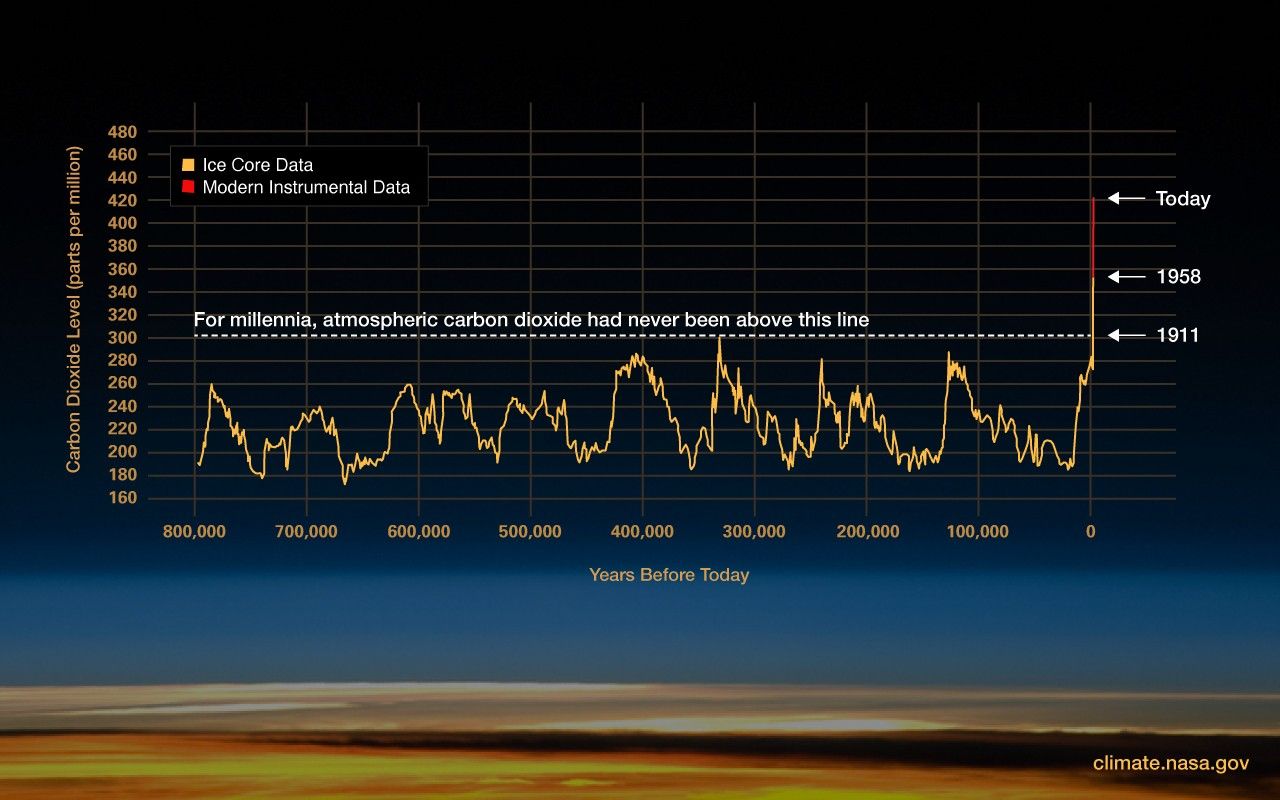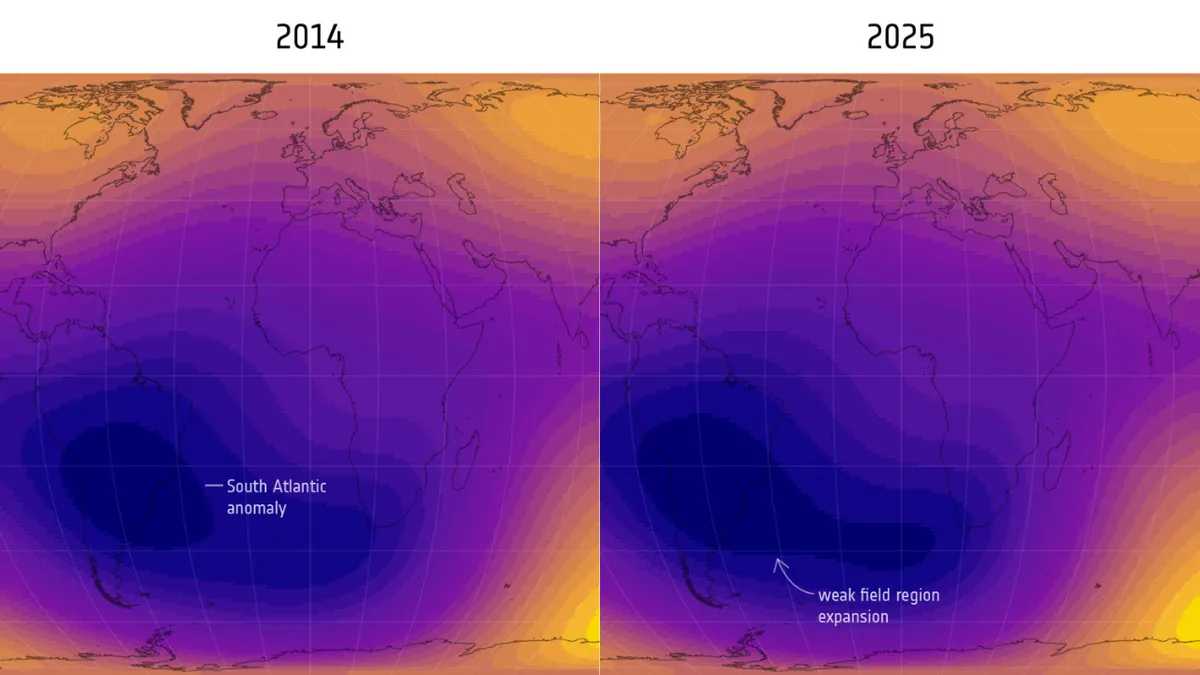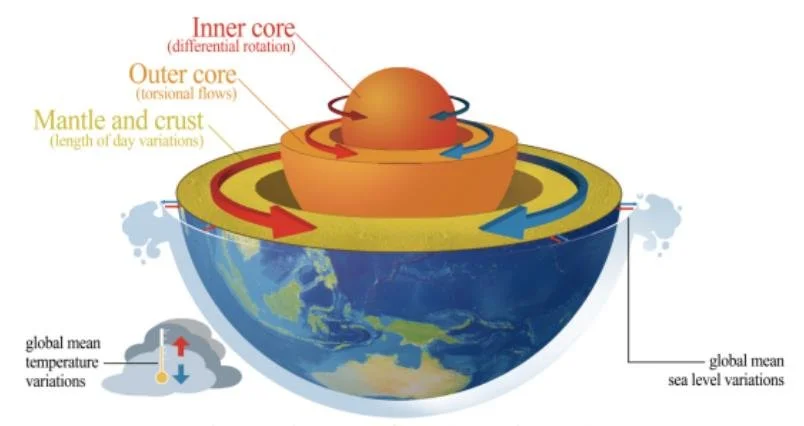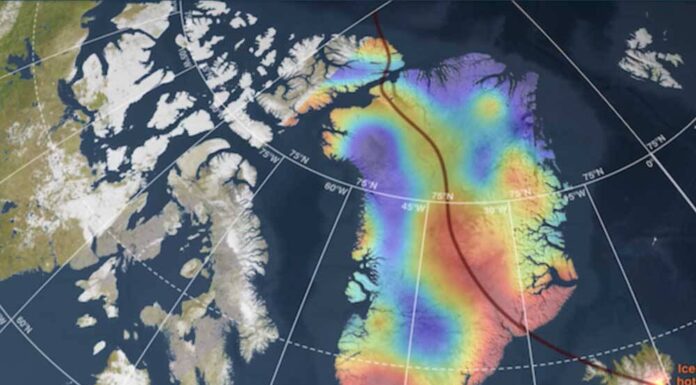Introduction
The Earth’s interior is far from dormant. Mantle plumes—massive upwellings of hot material from the core-mantle boundary—create localized hotspots that influence everything from volcanic activity to ice sheet dynamics. In polar regions, these plumes contribute to basal melting, where geothermal heat flux thaws ice from underneath, lubricating glaciers and accelerating their slide into the ocean. According to NASA/GRACE data, Greenland lost an average of 279 billion tons of ice per year between 1993 and 2019, while Antarctica shed 148 billion tons annually over the same period [2].

Recent studies, such as Weerdesteijn et al. (2024), highlight extreme heat fluxes up to 970 mW/m² beneath the Northeast Greenland Ice Stream (NEGIS), far exceeding the typical continental average of 60 mW/m² [1]. This internal heating, combined with atmospheric warming, poses a dual threat to sea-level stability. As of October 2025, new seismic and satellite advancements are refining our understanding, but debates persist over the relative roles of geothermal versus anthropogenic factors. This section overviews the mechanisms and sets the stage for deeper analysis.
Mantle Plumes: The Underground Engines of Heat
Mantle plumes originate deep within Earth, rising through the mantle to deliver elevated geothermal heat flux to the surface. In Greenland, a plume linked to the Iceland hotspot has been active for about 3 million years, causing thinner lithosphere and higher heat flow [G2]. Research from 2020 shows this plume branches into the lower mantle, feeding thermal activities in Iceland and Jan Mayen, with local fluxes driving basal melt rates of 21.4 Gt/year [G4]. Under NEGIS, fluxes reach 970 mW/m², accelerating glacier speeds and explaining uplift rates over 12 mm/year in southeast Greenland [1].

In Antarctica, mantle plumes beneath West Antarctica produce heat fluxes of 150–180 mW/m², sufficient for basal melting but milder than Yellowstone’s 200 mW/m² [8]. A 2022 ScienceDirect study notes this enhances ice loss, with hidden heat sources filling subglacial lakes [G1]. Iceland’s plume, on the Mid-Atlantic Ridge, exemplifies regional impacts, influencing Arctic volcanism and indirectly affecting Greenland’s ice [4].

These figures underscore plumes’ role in ice dynamics, but critics argue they are overstated. Some hypotheses, like Earth’s core rotation influencing warming, remain fringe and not widely accepted [5].

Balanced views from experts emphasize integration: “Mantle plumes don’t negate CO₂‑driven warming but amplify it in vulnerable spots,” notes a 2025 Nature Geoscience analysis [6].

Impacts on Polar Ice Melt and Global Consequences
The consequences are stark. In Greenland, high mantle heat thins the lithosphere, enabling complex interplay with surface melt and leading to faster ice flow [G3]. A 2013 study estimated this internal heat contributes to melting even from below, with recent models showing increases of 2.9 Gt in basal melt during the 2000s [G11]. Antarctica faces similar issues; a 2021 study linked plumes to accelerated isostatic rebound and glacier instability [G13].
Social media discussions reflect public alarm over “doomsday” scenarios like Thwaites Glacier collapse, but scientists stress data-driven views [G15]. One insight: plume amplification could underestimate sea‑level rise by 10–20 % in models ignoring geothermal variability. Viewpoints vary; skeptics on social media question if natural heating overshadows human causes, while researchers at UT Austin (2025) point to mantle “dripping” as evidence of dynamic ongoing processes [8].
Objectively, while plumes are natural, their interaction with climate change creates feedback loops: warmer oceans infiltrate subglacial areas, enhanced by plume heat, hastening melt [G7].
Technological Advances and Modeling Breakthroughs
Advancements are key to understanding. Satellite gravity measurements via GRACE‑FO and GNSS monitoring detect ice loss and uplift precisely [2]. Machine learning analyzes seismic data, revealing a new mantle transition zone at 1050 km depth that affects convection and heat flow [7].

Geophysical modeling integrates seismic, gravity, and heat data to characterize plumes [8]. These tools enable better predictions. For instance, 2025 MIT research on “lost world” mantle traces suggests complex dynamics influencing localized heating [1]. Solutions under study include AI‑driven plume mapping to forecast migrations and risks. International efforts, like the British Antarctic Survey, push for enhanced monitoring despite funding cuts noted in 2025 NSIDC reports [G7].
Balanced Viewpoints and Constructive Perspectives
Debates abound. Proponents of geothermal dominance cite studies showing plumes as primary melt drivers in spots like NEGIS [1]. Others, per NASA, argue atmospheric warming dominates, with internal heat as a secondary factor [2]. A balanced take: “Geothermal anomalies must be factored into models for accuracy,” says a 2024 Weerdesteijn study [1].
Constructive solutions focus on integration. Researchers advocate holistic Earth system models combining geophysical and climate data [6]. Policy‑wise, polar treaties could mandate geothermal monitoring. Emerging tech like advanced radar for subglacial mapping offers hope, potentially identifying at‑risk areas early [G4]. Public awareness, amplified on social media, drives funding for interdisciplinary research [G18].
MAIN SOURCES
- MIT research on deep Earth mantle features and localized heating effects
- NASA evidence on climate change, ice mass loss, and geothermal contributions
- Study on Earth’s inner core composition influencing mantle dynamics
- Insights into mantle and core processes affecting Earth’s magnetic field
- Hypothesis on Earth’s rotation affecting climate (not widely accepted)
- Study on heat-driven continental crust stability and mineral mobilization
- Discovery of mantle transition zone affecting convection and heat flow
- Discovery of mantle “dripping” beneath North America influencing lithospheric dynamics
—
This synthesis shows that Earth’s interior is producing localized anomalous heat fluxes due to mantle plumes, particularly beneath polar ice sheets (Antarctica, Greenland, Iceland). These geothermal anomalies accelerate basal ice melting, influence glacier dynamics, and cause crustal uplift, necessitating their inclusion in climate and ice sheet models for accurate predictions. Recent advances in satellite geodesy, seismic imaging, and geophysical modeling have been crucial in detecting and quantifying these effects, providing new insights into Earth’s internal thermal state as of 2024-2025.
Propaganda Risk Analysis
Score: 4/10 (Confidence: medium)
Key Findings
Corporate Interests Identified
No companies are mentioned in the article, so direct corporate benefiting is unclear. However, fossil fuel interests (e.g., as noted in web sources like Grist and The Conversation) could indirectly benefit if the emphasis on natural geothermal factors like mantle plumes diverts attention from anthropogenic CO2 emissions, potentially serving as a form of greenwashing by implying climate change has significant ‘natural’ components that reduce the urgency for emissions reductions.
Missing Perspectives
The article appears to exclude or downplay voices from mainstream climate scientists who emphasize that while mantle plumes contribute to localized melting (e.g., under Greenland or Antarctica), they are a minor factor compared to overwhelming CO2-driven global warming. Critical viewpoints, such as those in Scientific American or The Guardian articles, highlight that geoengineering proposals to counter ice melt are ineffective and that natural variations do not negate fossil fuel impacts— these are absent, potentially creating an imbalanced narrative.
Claims Requiring Verification
The title’s claim of ‘accelerating’ polar ice melt specifically in 2025 due to mantle plumes and geothermal flux lacks cited sources or data in the provided excerpt, making it potentially dubious without verification. Web sources (e.g., ScienceDaily and NASA-related reports) confirm mantle plumes cause some basal melting, but they date back years and do not specify 2025 acceleration; recent articles note a ‘dramatic slowdown’ in Arctic sea ice melt due to natural variations, contradicting any unverified acceleration narrative.
Social Media Analysis
Searches on X/Twitter for mantle plumes, geothermal flux, and polar ice melt in 2025 yielded posts discussing scientific concepts like hot rock upwellings contributing to Arctic and Antarctic melting, with some highlighting feedback loops and accelerating mass loss. Accounts including climate advocates and researchers shared warnings about permafrost thaw and ice sheet instability, but there was no indication of coordinated propaganda, greenwashing, or paid promotions. Sentiment leaned toward alarm over climate change, with references to natural phenomena like plumes not negating human impacts. Broader queries on propaganda and greenwashing linked to fossil fuel misinformation on the platform, but nothing directly tied to this article’s topic.
Warning Signs
- Emphasis on natural factors (mantle plumes) amplifying but not negating CO2 warming could subtly downplay human responsibility, resembling marketing-like language that softens calls for emissions cuts.
- Absence of independent expert opinions or sourcing for the ‘2025 acceleration’ claim, which sounds speculative and alarmist without evidence.
- Lack of balance: No discussion of opposing views that mantle plumes are a secondary, long-term process overshadowed by rapid anthropogenic warming.
- Potential for greenwashing if this narrative is used to obscure fossil fuel roles, as seen in broader web reports on coordinated climate denial on social media.
Reader Guidance
Analysis performed using: Grok real-time X/Twitter analysis with propaganda detection
Other references :
sciencedaily.com – MIT finds traces of a lost world deep within planet Earth – Science Daily
science.nasa.gov – Evidence – NASA Science
sciencedaily.com – Earth’s inner core exists only because of carbon | ScienceDaily
livescience.com – A massive weak spot in Earth’s magnetic field is growing, scientists …
scienceunderattack.com – (9) Rotation of the Earth’s Core as the Source of Global Warming
phys.org – Earth’s continents stabilized due to furnace-like heat, study reveals
science.org – New complexity emerges in Earth’s ‘boring’ middle region – Science
ig.utexas.edu – North America is Dripping from Below, Geoscientists Discover
climate.gov – What’s the hottest Earth’s ever been? | NOAA Climate.gov
scienceunderattack.com – Source
sciencedaily.com – Source
sciencedaily.com – Source
nature.com – Source
en.wikipedia.org – Source
phys.org – Source
nsidc.org – Source
sciencedirect.com – Source
wattsupwiththat.com – Source
mdpi.com – Source
ncbi.nlm.nih.gov – Source
sciencedirect.com – Source
x.com – Source
x.com – Source
x.com – Source
x.com – Source
x.com – Source
x.com – Source



